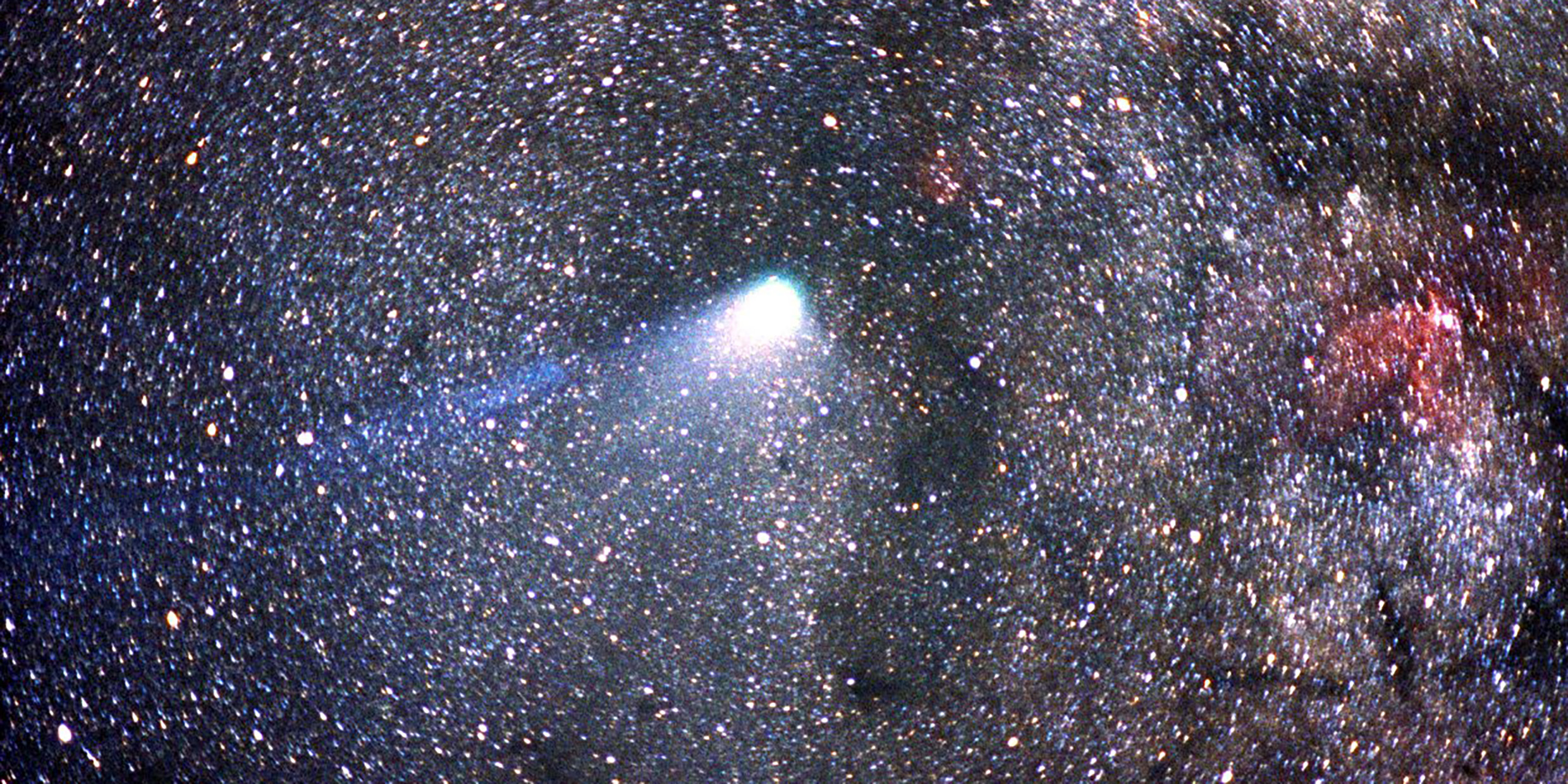Originally published 2 December 1985
Comet Halley is destined to disappoint a lot of people. Maybe it is time to hear from someone who has not been disappointed.
My search for the comet began in September [1985], when according to predictions it would first come within reach of my 14-inch Celestron telescope. At that time Halley was crossing the gulf of space between the orbits of Jupiter and Mars, inbound on its once-in-a-lifetime visit to the inner solar system. It was an object of the 12th magnitude, which means it was about 20 million times less bright than the faintest star that can be seen with the naked eye.
I knew that the comet would be highest in the sky just before dawn. I waited until mid-month, to allow the moon to pass out of the morning sky. And I watched the weather. The night of the 14th promised to be dark and clear. I set my alarm clock for 4 a.m.
Reality or wish?
I think I saw it. I knew exactly where to look, and when I glanced there with averted vision I sometimes felt that I could detect a slight modulation of the darkness. I think I saw Comet Halley, but I won’t swear to it. What I saw may have been more the wish for the comet than the comet itself. But I did see Comet Giacobini-Zinner that morning, only a degree or two from Halley and a quiet presence, brighter than Halley and unheralded by hype.
Mid-October brought another moonless “window” to look for the comet. Halley was still further out in the solar system than the orbit of Mars, but picking up speed in its fall towards the sun. The predicted brightness placed it at the 10th magnitude, well within reach of my telescope. I knew this time my chance of seeing Halley was good.
Again, I rose before dawn and made my way to the observatory. A cold front had passed during the night and swept the sky clear of every trace of haze. The atmosphere was unusually steady. I swung my telescope to the star Betelgeuse at the shoulder of Orion, and then tracked up the giant’s arm and out along the club. I knew that the comet was very near to the star Chi2 Orionis, at the tip of the club. That region of Orion is in the thickest stream of the winter Milky Way. The field of my telescope sparkled with tiny diamond stars.
The object I was looking for was 140 million miles from Earth, moving on a long elliptical track that takes it nearer to the sun than Venus and further out than Neptune. The nucleus of the comet is a ball of gas, dust, and ices a few miles in diameter. What I hoped to see was the much larger coma, the cloud of dust and gas that has been released from the nucleus and surrounds it like a halo, glowing in reflected sunlight.
In October, Comet Halley was moving more or less directly toward the Earth. If I could have stopped the Earth in its orbit and waited, the comet would have passed very near to us later this month. At that time, Halley will be above the plane of the Earth’s orbit (on the northern side), and New Englanders would have had a splendid view. But the Earth did not stop; it went on its way, in the opposite direction around the sun, and left Halley behind. At the end of the year, if we are lucky, Halley will be barely visible to the naked eye. In the spring the Earth and comet will approach again, when both have moved to the other side of the sun. But then Halley will have passed below the plane of the Earth’s orbit and observers in the southern hemisphere will have the better view.
But never mind; I will take what I can get. I nudged the telescope north and east of the star Chi2 Orionis and quickly found the comet. What I saw was a circular blur of light, brighter at the center, fuzzy at the edges, like a smudged star. The nascent tail, if there was one, was hidden behind the coma. The comet drifted like an almost invisible ghost among a glittering of stars.
Why look?
The first two weeks of November brought another moonless opportunity to look for Halley. Now the comet had moved into the constellation Taurus and was was steadily brightening. It was an object for the backyard and binoculars, swelling in sunlight and delicately beautiful. But you would not say Halley was conspicuous. You would not have noticed the comet if you did not know exactly where to look and what to look for.
Then why? Why go looking for a blur of light, an inconspicuous patch of haze, a tail-less smudge of dust? My observations were of no value to science. In every practical sense, they were useless. But I like to think there is a touch of the poet in all of us, and I recall something Samuel Johnson wrote: “To a poet, nothing can be useless. Whatever is beautiful, and whatever is dreadful, must be familiar to his imagination: he must be conversant with all that is awfully vast or elegantly little.”



